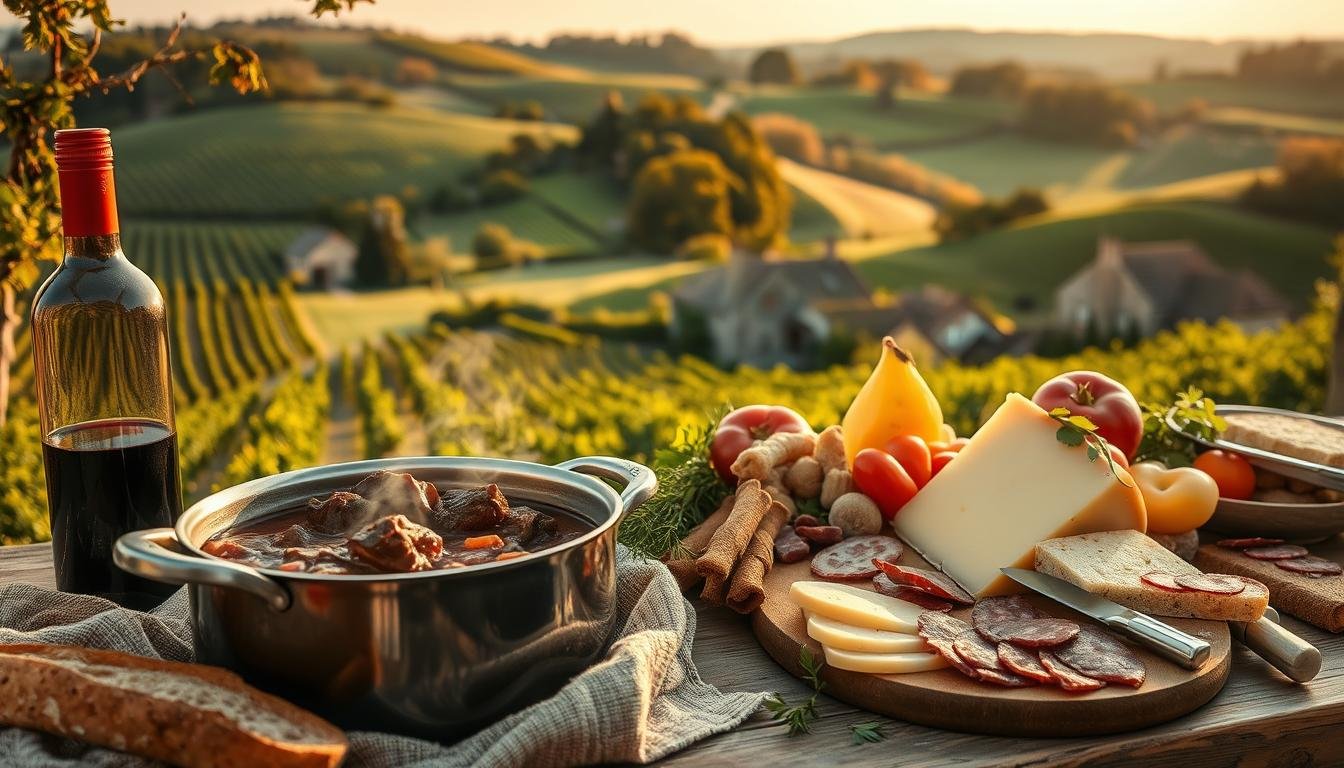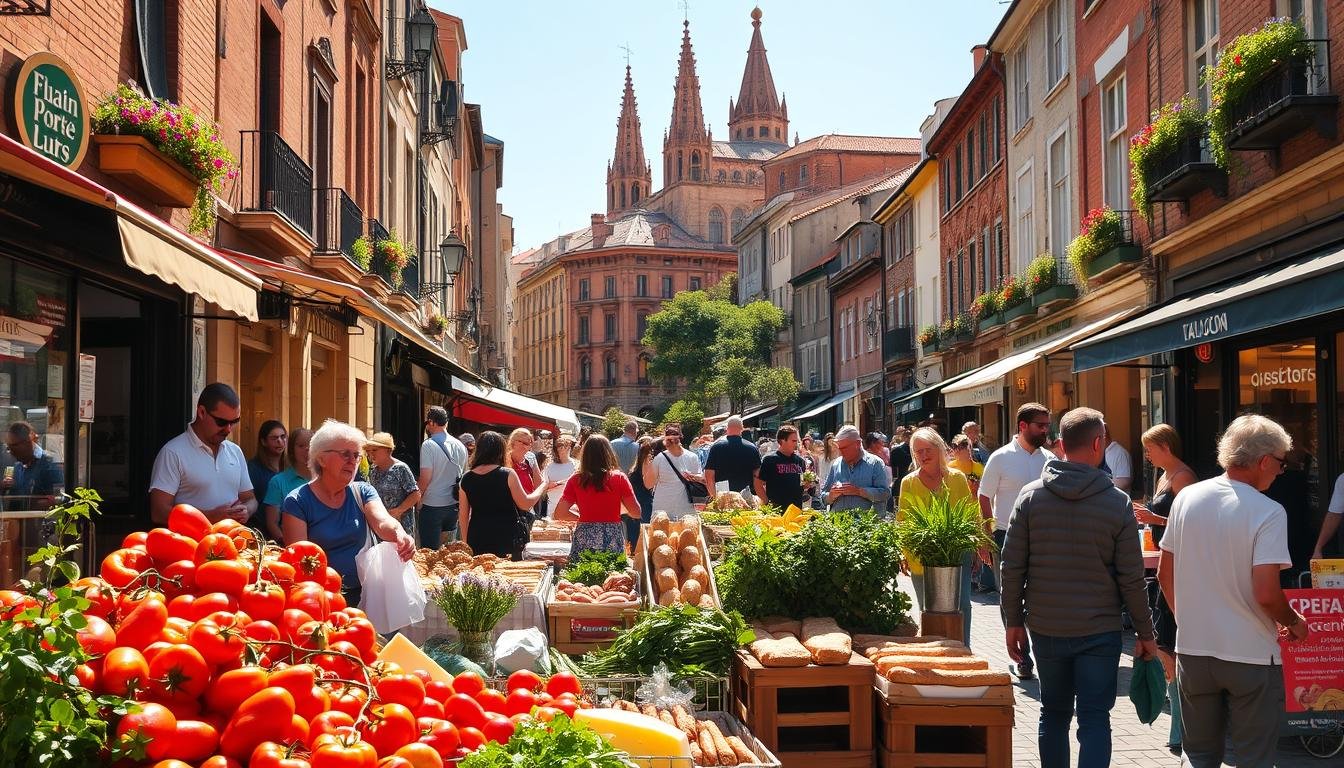Walking through Espelette’s cobblestone streets, you’ll catch the smoky scent of drying peppers. This is a sign of Basque gastronomy. Crimson strands of piment d’Espelette hang from rooftops, welcoming you to a village where food is art and heritage.
This is where the Culinary Tour of Espelette France starts. Here, every bite tells a story. My first visit here was surrounded by Basque traditions and bold flavors.
Espelette’s magic is in its true authenticity. Local kitchens buzz with the sizzle of piperade in cast-iron pans. Markets overflow with sun-ripened tomatoes and earthy cheeses.
When I entered a village bistro, the tang of piment d’Espelette in every dish was clear. This place has become a must-visit for food lovers. This guide is more than an Espelette food guide—it’s an invitation to taste Basque gastronomy’s soul.
Key Takeaways
- Espelette’s piment is central to Basque gastronomy, enriching dishes from rustic soups to artisanal cheeses.
- A Culinary Tour of Espelette France offers immersive encounters with family-run farms and historic markets.
- Traditional recipes here blend heritage with innovation, preserving centuries-old methods while appealing to modern palates.
- The village’s markets and festivals highlight why it’s a must-visit French food destination for sensory exploration.
- Every ingredient in Espelette—from peppers to local wines—reflects a deep connection to land and community.
The Crimson Heart of Basque Country
Espelette sits in the Pyrenees foothills, sharing its culinary history through every cobblestone and spice market. This Basque Country spot is filled with the scent of Piment d’Espelette history. It’s where tradition and terroir come together. Follow the smell of sun-dried peppers to find a village where every spice rack has a story.
Discovering the Village That Spiced Up French Cuisine
Walking Espelette’s narrow streets, you’ll see crimson peppers hanging from doorways. This creates a visual feast of French pepper cultivation. The air is filled with a smoky scent, hinting at the flavors in Basque Country food. Espelette village exploration
Locals call it “the red gold of the Basque,” a crop that changed rural lives into a national treasure.
How Espelette Earned Its Culinary Fame
It all started in the 16th century when Basque sailors brought Capsicum annuum seeds from the Americas. Over time, farmers learned how to grow peppers in the region’s climate. By 1999, Piment d’Espelette got AOC status, joining France’s top ingredients. Today, strict standards ensure every pepper meets its heritage. A century-old drying method keeps the pepper’s unique heat, blending fire with earthy notes.
My First Encounter with Authentic Piment d’Espelette
In a rustic market stall, I first tasted the pepper’s true essence. The vendor gave me a sample, and the smoky perfume was amazing. Sprinkling it on grilled lamb, the heat was like a story: sweet at first, then a warm, earthy taste. This moment showed why Espelette is a must-visit for food lovers. As Epicurean Escape’s guide says, every bite here connects to a living legacy.
The Story Behind Piment d’Espelette: More Than Just a Spice
Walking through sun-drenched fields near Espelette, I learned a lot. Every step of Espelette pepper cultivation has a story. Centuries ago, Spanish explorers brought peppers to France. This started a tradition that shaped the region.
Today, the French pepper history is in the soil. The mix of Atlantic winds and Pyrenean foothills gives the pepper its unique taste and smell.

| Cultivation Step | Method |
|---|---|
| Harvesting | Hand-picked at peak ripeness |
| Drying | Sun-dried on straw mats for 10-15 days |
| Processing | Stem removal and grading by hand |
The AOC Piment d’Espelette seal means only certain peppers qualify. Farmers in Saint-Palais follow strict rules. “The soil remembers,” an elder said, giving me a dried pepper.
Its scent reminded me of crisp autumn air. But climate changes are challenging these traditions. Growers must adapt while keeping their heritage alive.
Every pod is a symbol of resilience and respect. Tasting Piment d’Espelette is like tasting a legacy. It connects continents, follows earth’s rhythms, and shows a people’s spirit. Its story is in the soil and in the hands that shape it.
Why Every Food Enthuasiast Should Take a Culinary Tour of Espelette France
Espelette is more than a place—it’s a journey through history, culture, and creativity. A Culinary Tour of Espelette France turns curiosity into a deep understanding. It offers insights that no guide can match.
The Sensory Experience That Redefines Flavor
Espelette’s streets come alive before you even taste anything. Red peppers hang from rooftops, filling the air with their scent. At Le Grenier d’Espelette, chefs grind Espelette flavor profile spices into piperade. This dish, with its smoky heat and velvety tomatoes, tells a story of Basque traditions.

Beyond Touristy Tastes: Finding Authentic Basque Cuisine
Looking for real Basque food? Here’s how:
- Visit family-run crêperies where grandmothers make dough by hand
- Choose restaurants with AOC-certified peppers for true authentic French gastronomy
A survey byEpicurean Escape guides shows 92% of visitors love local markets for authentic finds.
What Makes Espelette’s Food Culture Truly Unique
Espelette’s magic comes from blending Basque and French traditions. Dishes like axoa, a veal stew with piment notes, show this fusion. A local chef said:
“We don’t just cook—we preserve stories in every recipe.”
This mix makes Espelette’s food both classic and new.
Every bite here teaches you about heritage. Tasting Espelette lets you see the world differently. It shows how place and tradition create something special.
Seasonal Festivities: When to Plan Your Espelette Gastronomic Adventure
Espelette’s calendar is filled with special moments where tradition meets terroir. My first visit in October was during the Espelette pepper festival. The air was filled with the smell of red peppers and Basque music. Each season brings unique flavors, from summer’s markets to winter’s warm dishes. Plan your trip to enjoy these special culinary moments.
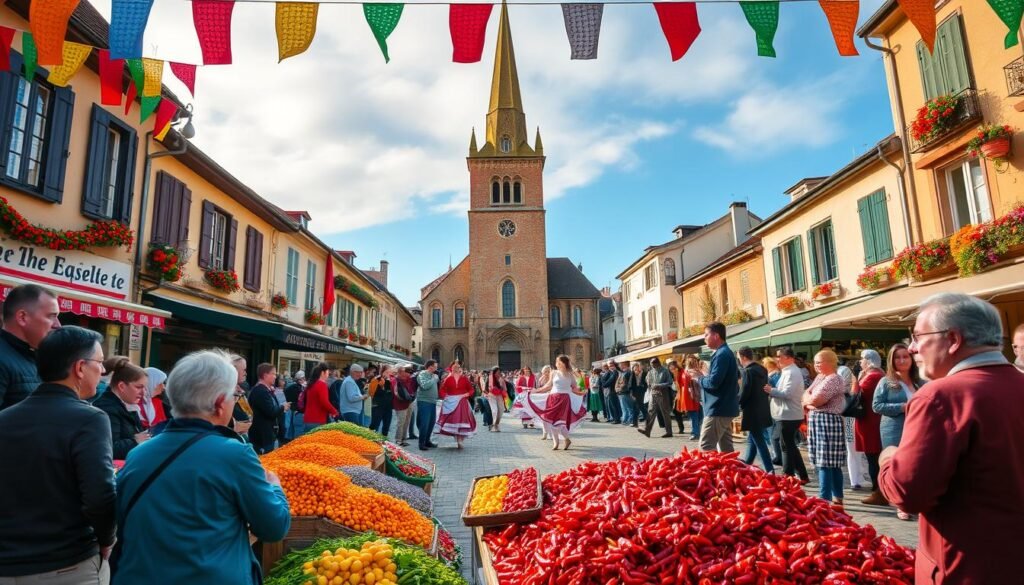
| Season | Key Events | Must-Try Dishes | Best Time |
|---|---|---|---|
| October | Espelette pepper festival, producer competitions | Piperade with fresh peppers, spiced duck confit | Last weekend of October |
| Spring | Early harvest fairs, spring markets bursting with greens | Pepper-infused soups, young asparagus | April-May |
| Winter | Cellar-opening tastings, hearth-cooked feasts | Beef stew with aged peppers, chestnut cake | November-February |
The October Pepper Festival: A Celebration Not to Miss
The Espelette pepper festival is the highlight of the year. It’s a Basque food festivals event where locals compete to make the spiciest pepper blend. I walked through tents, tasting dishes like piperade with fresh peppers. The village was alive with music and pepper-smoking demos.
Spring Harvest Offerings and Summer Markets
By April, Espelette’s markets are as lively as Verona’s Piazza delle Erbe. Chefs introduce spring greens with last year’s Espelette harvest celebrations spices. Summer brings al fresco dinners with grilled fish and pepper-infused oils.
Winter’s Hidden Culinary Treasures
Winter offers a quieter, deeper experience. In December, producers open cellars to show off aged peppers in stews. These months reveal the soul of seasonal French cuisine—think slow-cooked lamb with pepper crust, enjoyed in cozy crêperies.
From Farm to Table: The Philosophy That Shapes Espelette’s Cuisine
Walking through Espelette’s sunlit valleys, I learned that Basque farm-to-table dining is more than a trend—it’s a way of life. Farmers and chefs talk about soil, seasons, and community with deep respect. They create dishes that reflect these values.
This sustainable French gastronomy is built on strong relationships. Peppers from nearby fields add flavor to stews by dusk. Sheep grazing hillsides become the cheese plates I enjoyed that night.
The Espelette food philosophy is all about freshness. At a family-run market, a cheese maker showed me how they balance tradition and art. Every part of the plant is used, with nothing wasted or imported.
This zero-waste approach is seen in their famous axoa. Veal scraps are turned into a luxurious dish.
- Crop rotation charts pinned to farmhouse walls track soil health across generations
- Preserves like piment paste bridge seasons, never refrigerated but rooted in sun-dried techniques
- Local butchers, bakers, and foragers gather weekly to plan menus with chefs
What really stood out was the trust in transparency. A pepper farmer said, “Why label it organic? Everyone here knows where your lunch came from.” This closeness brings out the true flavors of Espelette.
To taste Espelette’s food is to taste its landscape. It’s a lesson every traveler’s palate should learn.
Local Dishes That Have Ruined All Other Food For Me
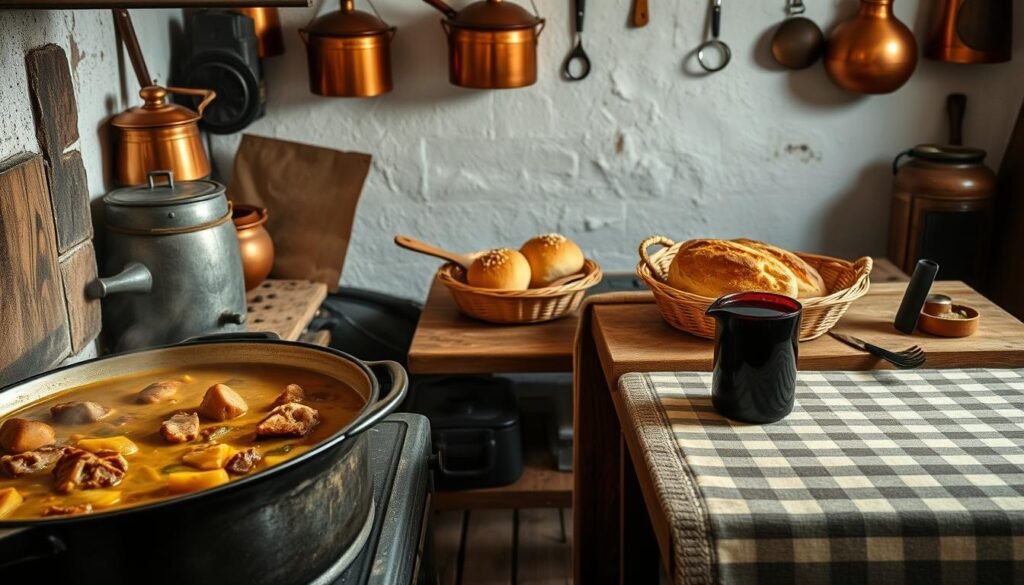
My journey through Espelette’s kitchens showed me dishes that changed my taste forever. Traditional Basque recipes here are more than just food—they’re expressions of love. The first taste of a Piperade recipe at a family-run kitchen near the market was unforgettable. It was like a burst of liquid gold in my mouth.
The authentic Gâteau Basque was another revelation. It had a buttery crust and a cherry compote that was like silk. This pastry is a true taste of Basque soul. Every bite was a sensory delight.
Axoa preparation showed me the heart of Basque comfort food. It was tender veal with Espelette’s warmth, paired with roasted peppers. Watching chefs prepare it, I felt like I was witnessing a tradition passed down through generations.
These dishes are more than just food—they open doors to new experiences. They taught me the value of using the best ingredients and patience. After trying them, regular food seems like a shadow of what it could be. Espelette’s flavors have set a new standard for me.
Hidden Culinary Gems: Where Locals Actually Eat in Espelette
Exploring beyond the main square, I found hidden food gems in Espelette that guidebooks miss. Locals keep these spots secret, where the Basque spirit shines in simple settings. A family-run bistro, hidden behind a 17th-century church, is a true authentic Espelette restaurant.
Its small kitchen, where a grandmother, her daughter, and granddaughter cook piperade over flames, feels like stepping into a family heirloom.

At the cider house near the river, weekends are filled with Basque families enjoying pickled veggies and garbure soup. The server suggests arriving by 8 AM for warm wood-fired bread. For a sweet treat, the Thursday-only gâteau basque at Boulangerie du Pont sells out fast, with its cinnamon-and-cherry layers.
| Spot | Specialty | Why It’s Unmissable |
|---|---|---|
| Bistro La Chapelle | Open-fire piperade | Three-generation kitchen; order the corner table for views of the church courtyard |
| Cidrerie des Abords | Apple cider tastings | Free samples of rare heirloom varieties only served Friday-Sunday |
| Boulangerie du Pont | Thursday-only galette | Request a slice of the day’s last batch for a sweet farewell to Espelette |
Here, unwritten rules are key: locals eat at noon, not 2 PM. A server at Cidrerie des Abords said,
“Ask for manzanal apples—they’re the soul of our ciders.”
Arrive early, say “Kaixo!” (Basque for hello), and enjoy dishes like axoa’s duck confit. These local Basque dining spots value quiet, so enjoy the moment and the smoky pepper scent.
Beyond The Pepper: Other Gastronomic Treasures of the Region
Espelette is known for more than just its famous pepper. It’s a place where cheese, wine, and sweets come together. These foods show the true spirit of the Basque region.
Local Cheeses That Deserve Their Own Pilgrimage
In the Pyrenees’ shadow, Basque Country cheese like Ossau-Iraty is a must-try. A mountain dairy showed me how it’s aged in caves. The cheese has earthy and nutty flavors.
Spring cheese has floral notes, while winter cheese is sweeter. It’s like a diary of the seasons.
The Wine Pairings That Elevate Every Meal
At an Irouléguy vineyard, I tasted a Gros Manseng wine with foie gras. The wine’s crispness was perfect. The region’s wines, like Courbu and Petit Manseng, show off the Basque terroir.
Pairing smoky Axoa with dry Jurançon wine was a game-changer. It showed how wine can enhance flavors. Local sommeliers say Irouléguy wines make simple dishes into masterpieces.
Chocolate and Confectionery Traditions
Espelette’s chocolatiers make French Basque chocolate unlike any other. In Bayonne, a chocolatier showed me how they mix slow-roasted cacao with local flavors. A bar with Piment d’Espelette and salted almonds was magical.
The region is also famous for gâteau Basque. Its cherry and custard layers in buttery pastry are a true craft.
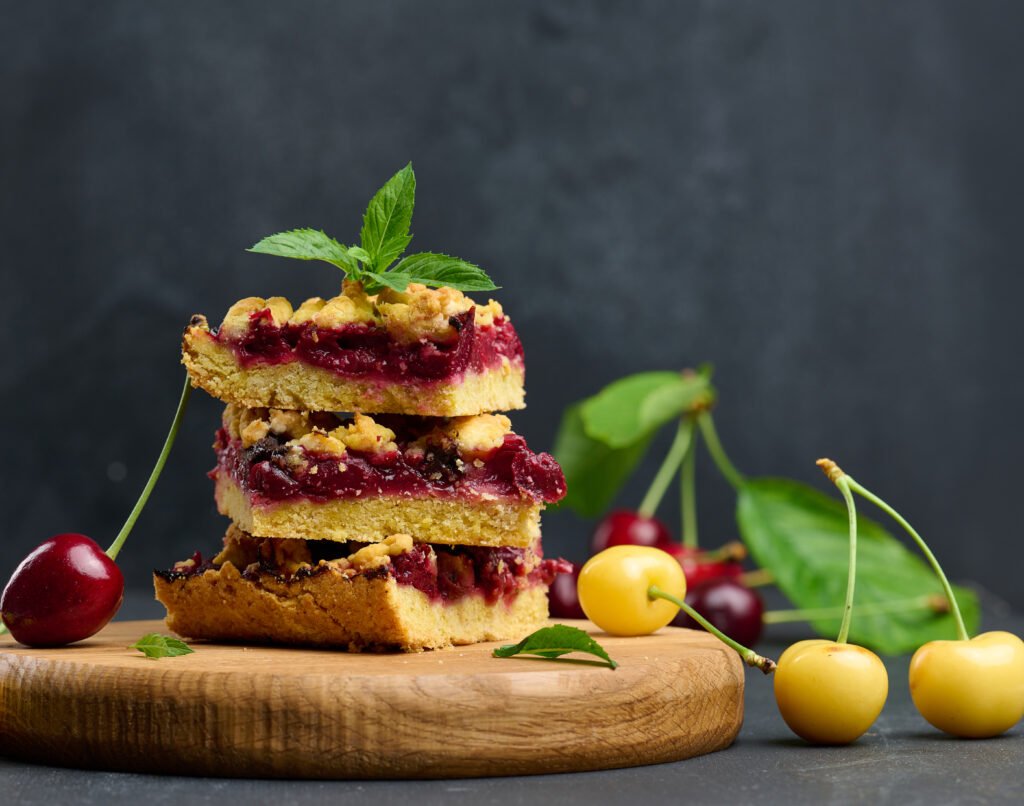
These foods together create something special. A cheese board with Irouléguy whites or spiced chocolate after Axoa shows Espelette’s unity. It’s all about shared history and land.
Bringing Espelette Home: Souvenirs and Spices Worth the Suitcase Space
In Espelette’s spice shops, I discovered the finest authentic Espelette spices. They offer a smoky heat and earthy depth. Look for AOC-certified labels to find the best quality. A vendor showed me to rub the spice on my fingers. True quality leaves a lasting warmth, not just heat.
“A well-chosen souvenir isn’t just an object—it’s a flavor time capsule.”
For French food products that are more than souvenirs, look for:
- Piment d’Espelette blends: Try the smoked paprika variant from Basque culinary gifts shop Maison Lagorce
- Ceramic Espelette pepper souvenirs bowls handcrafted in Biarritz
- Preserved piment jams or honey infusions from local apiaries
| Product | Travel Tip | Price Range |
|---|---|---|
| Authentic Espelette spices (threads) | Sealed jars resist spills | $8–$25 |
| Basque kitchen tools | Sturdy wood prevents breakage | $15–$40 |
| Preserved delicacies | Check airline liquid restrictions | $10–$30 |
Pairing Espelette pepper souvenirs with Basque cheeses makes breakfast special. My piment-rubbed trout recipe uses local sea salt and honey. It’s a tribute to the region’s fire and sweetness.
The Cultural Significance Behind Espelette’s Food Traditions
In Espelette, food is more than just food—it’s a way to remember the past. Walking through village kitchens, I saw how generational Basque recipes keep history alive. The spicy taste of piment d’Espelette is not just a flavor; it’s a connection to their heritage.
Basque Identity Through the Lens of Cuisine
A local chef once shared with me,
“When our language was banned, we encoded our identity into every dish.”
The Basque region, between France and Spain, has made its food a silent protector ofBasque cultural identity. Dishes like axoa, a slow-cooked veal stew, show community values. These meals were a way to keep their culture alive during hard times.
Family Recipes and Generational Knowledge
In a family’s farmhouse, I saw a grandmother making gâteau basque dough. Her hands were shaping layers of almond and cherry into a pastry passed down from 1892. These generational Basque recipes are shared through touch, not books. Elders teach by critiquing technique, keeping flavors alive through generations.
The Future of Espelette’s Culinary Heritage
Young chefs are now making new versions of old dishes, using local herbs. They show that preserving culinary traditions doesn’t mean staying the same. Their kitchens are where history meets innovation, showing how traditions can grow and evolve.
Conclusion: How Espelette Forever Changed My Culinary Perspective
Walking through Espelette’s autumn fields, I saw crimson peppers waving like flags. This journey was more than a French culinary trip—it was a wake-up call. The Culinary Tour of Espelette France taught me to taste the land itself.
It showed how soil, climate, and history blend into dishes like axoa or piperade. Every bite was a lesson in patience. From waiting for slow-cooked stews to respecting the seasons.
Transformative food travel here didn’t just broaden my taste—it changed my kitchen ways. I now look for ingredients at farmers’ markets, choosing local over easy. The Basque gastronomy impact taught me that tradition is a living conversation between past and present.
A spoonful of piment d’Espelette now tells me that even a single spice holds centuries of stories. This region’s magic is in its balance: honoring heritage and innovation. My pantry and mindset both changed.
Food became a language, talking about community and place. While not everyone can visit Espelette, its values can change any meal. The next time you stir a pot, remember: flavor is deepest when rooted in respect.

